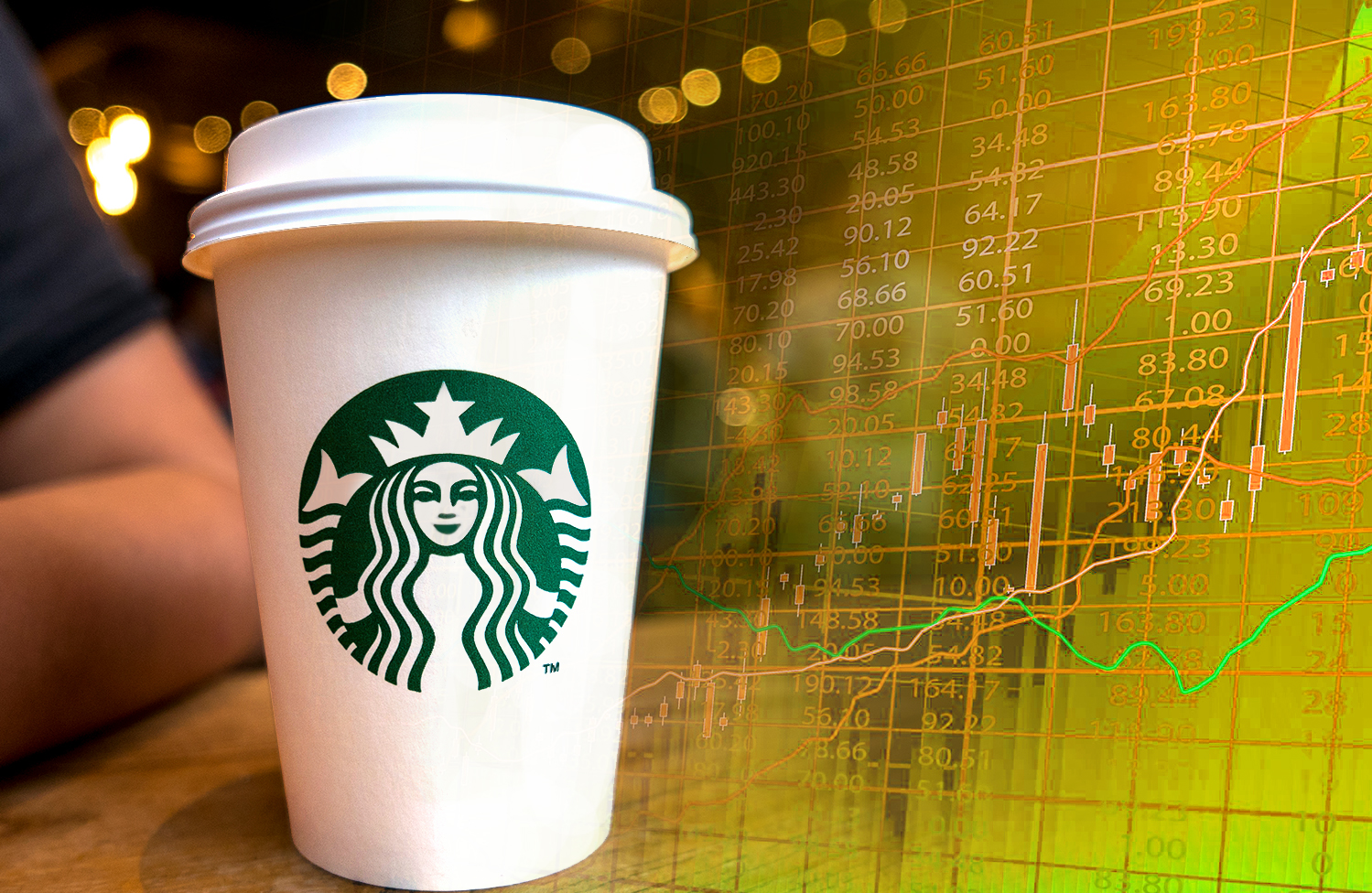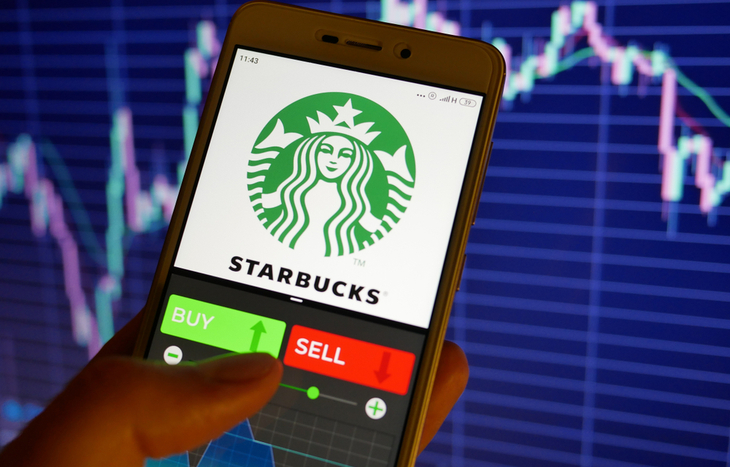Starbucks Stock Performance and Fundamentals

Starbucks, a global coffeehouse giant, has consistently been a popular choice among investors. This section explores the company’s stock performance and fundamentals, examining key trends and analyzing its financial health in comparison to its competitors.
Historical Stock Performance
The past five years have seen Starbucks stock experience both significant growth and periods of volatility.
- 2018: Starbucks stock experienced a decline due to concerns about slowing growth in the United States and a shift in consumer preferences towards healthier beverages.
- 2019: The stock rebounded as the company implemented cost-cutting measures and focused on international expansion.
- 2020: The COVID-19 pandemic significantly impacted Starbucks’ business, leading to temporary store closures and a decline in revenue. However, the company quickly adapted to the changing environment, implementing digital ordering and delivery services.
- 2021: Starbucks stock surged as the company recovered from the pandemic, benefiting from strong demand for its products and the reopening of economies worldwide.
- 2022: The stock continued its upward trend, driven by factors such as increased consumer spending and the company’s focus on innovation and growth initiatives.
Financial Health Analysis, Sbux stock
Starbucks’ financial health can be assessed by examining key metrics such as revenue growth, profitability, and debt levels.
- Revenue Growth: Starbucks has consistently generated strong revenue growth over the past five years, driven by factors such as new store openings, menu innovation, and increased customer spending.
- Profitability: The company has maintained healthy profit margins, demonstrating its ability to manage costs effectively and generate consistent earnings.
- Debt Levels: Starbucks has a manageable level of debt, allowing it to invest in growth initiatives and maintain a strong financial position.
Comparison with Competitors
To gain a better understanding of Starbucks’ financial performance, it’s crucial to compare its key metrics with those of its competitors in the coffee industry.
- Revenue: Starbucks remains the largest coffeehouse chain globally, with significantly higher revenue compared to its competitors, such as Dunkin’ Brands and Peet’s Coffee.
- Profitability: Starbucks generally boasts higher profit margins than its competitors, indicating its efficient operations and strong brand recognition.
- Debt Levels: Starbucks’ debt levels are comparable to its competitors, suggesting a healthy financial position within the industry.
Growth Strategies and Market Opportunities

Starbucks has consistently demonstrated its ability to adapt and thrive in a dynamic market environment. The company’s growth strategies are multifaceted, encompassing new product launches, store expansion, and digital initiatives. These strategies are underpinned by a keen understanding of key market trends, such as the growing demand for premium coffee and the rise of mobile ordering.
New Product Launches and Innovation
Starbucks consistently introduces new products and innovations to cater to evolving consumer preferences and tap into emerging market trends.
- Seasonal Beverages: Starbucks introduces seasonal beverages, like Pumpkin Spice Latte and Peppermint Mocha, to drive excitement and sales during specific periods. These limited-time offerings create a sense of urgency and attract customers seeking unique flavor experiences.
- Plant-Based Options: Starbucks recognizes the growing popularity of plant-based diets and offers a range of dairy-free and vegan options, including oat milk and plant-based protein beverages. This expansion caters to a broader customer base and aligns with the increasing demand for sustainable and ethical food choices.
- Cold Brew Expansion: Cold brew coffee has gained significant popularity in recent years. Starbucks has expanded its cold brew offerings, including nitro cold brew and ready-to-drink options, to capitalize on this trend and provide customers with a refreshing and flavorful alternative to traditional hot coffee.
Store Expansion and Global Reach
Starbucks’ strategic store expansion strategy aims to increase its global footprint and capture new markets.
- Emerging Markets: Starbucks actively expands into emerging markets, particularly in Asia and Latin America, where there is significant potential for growth. These regions offer a large and growing middle class with a rising demand for premium coffee experiences.
- Store Formats: Starbucks adapts its store formats to suit local preferences and market conditions. This includes smaller, more convenient stores in urban areas and larger, more immersive locations in suburban and tourist destinations. The company also experiments with new concepts, such as drive-thru-only locations and mobile-order-only stores, to optimize efficiency and convenience.
- Licensing Agreements: Starbucks utilizes licensing agreements to accelerate its expansion into new markets. These agreements allow local partners to operate Starbucks stores under the company’s brand, reducing capital expenditure and enabling faster market penetration.
Digital Initiatives and Mobile Ordering
Starbucks recognizes the importance of digital engagement and has implemented various initiatives to enhance customer experience and drive sales.
- Mobile Ordering and Payment: Starbucks’ mobile app allows customers to order and pay for their beverages and food ahead of time, streamlining the ordering process and reducing wait times. The app also provides personalized recommendations, loyalty rewards, and other features that enhance customer engagement.
- Digital Marketing and Social Media: Starbucks leverages digital marketing channels, including social media platforms, to engage with customers, promote new products, and drive traffic to its stores. The company’s social media campaigns often feature user-generated content and interactive experiences, fostering a sense of community and brand loyalty.
- Data Analytics and Personalization: Starbucks uses data analytics to understand customer preferences and behaviors. This data is used to personalize marketing messages, product recommendations, and store experiences, enhancing customer satisfaction and driving repeat business.
Emerging Technologies and Automation
Starbucks is actively exploring the potential of emerging technologies to enhance its operations and customer experience.
- Artificial Intelligence (AI): Starbucks is using AI to optimize its supply chain, personalize customer experiences, and automate tasks. AI-powered chatbots can provide instant customer support, while AI-driven algorithms can predict demand and optimize inventory management.
- Automation: Starbucks is exploring the use of automation in its stores to streamline operations and reduce labor costs. This includes automated beverage preparation systems and self-service kiosks for ordering and payment. These technologies can improve efficiency and allow Starbucks to focus on providing personalized customer service.
- Delivery Partnerships: Starbucks has partnered with delivery platforms like Uber Eats and DoorDash to offer its products to customers who prefer to order online and have their coffee delivered to their location. This expands the company’s reach and caters to a growing demand for convenient food and beverage delivery options.
Investor Sentiment and Market Dynamics: Sbux Stock

Investor sentiment towards Starbucks stock is currently mixed, reflecting a complex interplay of positive and negative factors. While the company enjoys a strong brand reputation and loyal customer base, concerns regarding macroeconomic headwinds, competition, and evolving consumer preferences are influencing investor decisions.
Current Investor Sentiment
The current investor sentiment towards Starbucks stock is characterized by a cautious optimism. While the company’s strong brand recognition and global reach remain attractive to investors, several factors are contributing to the mixed sentiment:
- Strong Brand and Loyal Customer Base: Starbucks has built a powerful brand and enjoys a loyal customer base, which provides a degree of resilience against economic downturns. This loyalty is reflected in the company’s consistent sales growth, even during challenging periods.
- Growth Opportunities in Emerging Markets: Starbucks continues to expand its presence in emerging markets, where there is significant potential for growth. This expansion strategy offers investors the prospect of long-term returns, as these markets mature and consumer spending increases.
- Innovation and Digital Initiatives: Starbucks is actively investing in innovation and digital initiatives, such as its mobile ordering and payment platform, which are attracting new customers and enhancing the customer experience. These initiatives are contributing to the company’s growth and profitability.
- Concerns about Rising Costs and Inflation: The rising costs of raw materials, labor, and energy are impacting Starbucks’ profitability, as the company is forced to pass on some of these costs to consumers. This is leading to concerns about the sustainability of the company’s earnings growth.
- Intensifying Competition: The coffee industry is becoming increasingly competitive, with new entrants and established players vying for market share. This competition is putting pressure on Starbucks’ pricing power and margins.
- Shifting Consumer Preferences: Consumer preferences are evolving, with increasing demand for healthier and more sustainable products. Starbucks is adapting to these changes, but it remains to be seen how effectively the company can cater to these evolving tastes.
Impact of Macroeconomic Factors
Macroeconomic factors, such as interest rates and inflation, are playing a significant role in shaping investor sentiment towards Starbucks stock.
- Rising Interest Rates: Higher interest rates increase the cost of borrowing for companies, which can impact their profitability and investment plans. Starbucks, like other companies, is susceptible to the impact of rising interest rates.
- Inflationary Pressures: Inflation erodes purchasing power and can lead to higher costs for companies. Starbucks is facing inflationary pressures, which are impacting its margins and profitability.
- Recessionary Fears: Concerns about a potential recession are weighing on investor sentiment, as a recession could lead to a decline in consumer spending, which would negatively impact Starbucks’ sales and profits.
Risks and Challenges
Starbucks faces several risks and challenges that could impact its stock price and future performance:
- Competition: The coffee industry is highly competitive, with both established players and new entrants vying for market share. This competition puts pressure on Starbucks’ pricing power and margins.
- Changing Consumer Preferences: Consumer preferences are evolving, with increasing demand for healthier and more sustainable products. Starbucks is adapting to these changes, but it remains to be seen how effectively the company can cater to these evolving tastes.
- Global Economic Uncertainty: Global economic uncertainty, such as geopolitical tensions and supply chain disruptions, can impact Starbucks’ business operations and financial performance.
- Labor Costs: Starbucks is facing increasing labor costs, particularly in the United States, where it is facing pressure from unions and workers demanding higher wages and better benefits. These labor costs are impacting the company’s profitability and could lead to further price increases.
- Regulatory Scrutiny: Starbucks is facing regulatory scrutiny in several countries, including the United States, over issues such as labor practices and tax avoidance. This scrutiny could lead to fines or other penalties, which could impact the company’s financial performance.
SBUX stock has been on a rollercoaster ride lately, reflecting investor sentiment towards the coffee giant’s future. The appointment of Starbucks’ new CEO has undoubtedly added another layer of complexity to the equation. Will the new leadership usher in a period of growth and innovation, or will it be a continuation of the recent struggles?
Only time will tell, but the eyes of Wall Street are certainly on SBUX stock as it navigates this uncertain terrain.
Sbux stock has been on a rollercoaster ride lately, reflecting the volatile nature of the coffee industry. It’s fascinating to see how leaders like Brian Niccol, whose journey is documented in the brian niccol wiki , navigate these turbulent waters.
His leadership style, honed through years of experience, could offer valuable insights into how to manage a brand like Starbucks in a rapidly changing world. The success of Sbux ultimately hinges on its ability to adapt and innovate, and Niccol’s story might hold the key to unlocking that potential.